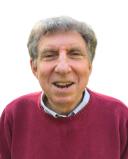Environment
The Healing Power of Nature and Beauty
Access to nature and art can contribute to psychological and physical health.
Posted September 9, 2024 Reviewed by Abigail Fagan
Key points
- Studies have shown the health effects of regular contact with nature—one source of beauty in our life.
- The impact of beauty in the treatment of "despondency" is also explored in the poetry of John Keats.
- This contact with beauty, or lack thereof, is an underexplored factor in how patients fare.
When ill, physically or mentally, we take our prescribed doses of medicine. If holistically inclined, we may also take vitamins, get the right amount of exercise, eat a healthy diet with enough protein, stay hydrated, etc. But what if many of us are missing out on an important element of disease prevention and healing—a daily dose of beauty?
Of course, a primary way in which people experience that is through contact with the natural world. As a recent New York Times article summarizes, “It’s a medical fact: Spending time outdoors, especially in green spaces, is good for you. A wealth of research indicates that escaping to a neighborhood park, hiking through the woods, or spending a weekend by the lake can lower a person’s stress levels, decrease blood pressure and reduce the risk of asthma, allergies, diabetes and cardiovascular disease, while boosting mental health and increasing life expectancy. Doctors around the world have begun prescribing time in nature as a way of improving their patients’ health" (Sheikh 2019).
Then, too, there is contact with beauty through art works, music, and well-designed homes and communal spaces. But to unpack beauty, let’s turn not just to clinicians, but to poets. John Keat’s famous Endymion begins:
A thing of beauty is a joy for ever:
Its loveliness increases; it will never
Pass into nothingness; but still will keep
A bower quiet for us, and a sleep
Full of sweet dreams, and health, and quiet breathing.
Therefore, on every morrow, are we wreathing
A flowery band to bind us to the earth,
Spite of despondence, of the inhuman dearth
Of noble natures, of the gloomy days,
Of all the unhealthy and o'er-darkened ways
Made for our searching: yes, in spite of all,
Some shape of beauty moves away the pall
From our dark spirits….
Keats had begun his training as a physician, working at Guy’s Hospital in London (where, also as a medical student, I did my OB/GYN rotation). Though he pivoted to pursue poetic ambitions, he nursed his younger brother Tom, who was to die of tuberculosis—the disease to which John Keats himself, would shortly succumb. So when he speaks of how contact with beauty can foster sleep, health, and quiet breathing, we suspect that this is no mere metaphor—but a matter for him of medical and spiritual necessity.
It was also a matter of psychological necessity. With his poetic ambitions far exceeding his social standing, his work little recognized during his time, his health uncertain, and his parents both dead, Keats was prey to periods of depression. His reference to despondence, gloomy days, and unhealthy and o’er-darkened ways, have an autobiographical feel. It also speaks to our current time when global warming, threats to democracy at home and abroad, racism and economic inequality, and multiple wars unfolding simultaneously make us feel the “inhuman dearth of noble natures,” and tempt us to anxiety and despondence.
Yet Keats found, and I think we do as well, that contact with beauty “moves away the pall/From our dark spirits.” For myself going on a long forest walk with my dog each morning is crucial for reviving body and spirit, keeping anxiety and depression at bay. I have a rotation of paintings that I keep by my computer so there is beauty to which I can ever shift my gaze while plowing through emails or on a Zoom call. Whenever work grows tedious, or at night after knocking off, I put on some favorite music, whether jazz, pop, or classical, and I am energized or consoled. My guess is you and your clients have equivalents—or should. Let us beware of contracting BDD—Beauty Deficiency Disease.
In my new book, The Healing Body: Creative Responses to Illness, Aging, and Affliction, I address 20 different strategies people use when they are dealing with bodily limitations and breakdowns, an issue sooner or later we all must face. In fact, the literature on “resilience” and “adaptation” in the face of chronic physical illness is vast. One meta-analysis summarizes the result of 106 such studies (White et al. 2018). Then too, there is a large array of treatments for mental illness, not only pharmaceutical, but cognitive-behavioral, psychoanalytic, interpersonal, etc.
But let us not forget one of the most important, yet under-thematized tools: regular access to beauty in one’s everyday life.
References
Leder, D. (2024) The Healing Body: Creative Responses to Illness, Aging, and Affliction. Evanston, IL: Northwestern University Press.
Sheikh, Knvul. 2019. "Enjoy 2 Hours a Week In Nature, Doctors Say." New York Times, June 25, D4.
White, K., Katherine, MSM. Issac, C. Kamoun, J. Leygues, & S. Cohn. 2018. “The THRIVE Model: A Framework and Review of Internal and External Predictors of Coping with Chronic Illness.” Health Psychology Open 5(2). https://doi.org/10.1177/2055102918793552


